Dalystown Holy Well, Dalystown Demesne, County Galway
My Christmas and New Year have been busy, and though it has been a good kind of busyness, returning to the inner state that can produce the written word is always a bit of a wrench after a break, especially if the break has involved family, friends, travelling and wine. Why do I get so little time for prayer at Christmas? The opposite ought to be the case. Of course the answer is that I don’t make enough time, and that this is my failure. However the fault is distributed, though, I am usually buzzing like a fly on the meniscus of a pond after the festive season. I am floating in shallow waters. I have drunk too much and yet I am thirsty. I need to wilfully hold my breath and dive back down again.
Still, this is not the reason that I have so little to tell you about this well. The reason is that, however hard I try, I can find virtually nothing written down about it anywhere. The place is holding its silence, and I can’t get in.
It was in Bright Week last year that I want looking for the little red dot on the local map that led me to this remote, rush-strewn field. Bright Week, in the Orthodox Tradition, is the week after Pascha (Easter.) It’s a celebration of the resurrection: of new life, and of salvation. It’s an appropriate time to consider the lilies of the field. An appropriate time to go seeking fresh springs under a ripening early summer sun.
I found the well, and I was surprised. Often I have trailed down muddy lanes in search of those little red dots and found nothing but a few collapsed stones, or a dried up watercourse. But here, down a muddy track far from any home or farm, was a simple but sturdy construction, built to last, and with plenty of strange little flourishes, some of which I have never seen anywhere else.
The flourishes begin at the iron gate which invites the pilgrim along a narrow, handrailed trail towards the circular enclosure that contains the well:
The enclosure itself, as you can see from these pictures, is carefully crafted: a gated circle with two neat stone turrets, containing a beautiful old wellhouse and a rag tree which clearly still attracts pilgrims, judging by the covid masks hanging limply from its branches:
The wellhouse itself is a unique design that I’ve not seen before. Stone steps lead down to the water, which is covered by a heavy stone slab: so far, so familiar. But clamber up onto the slab and you notice something: a hole in the top, through which you can see the waters below - complete with submerged saucepan for ladelling the water into your cup:
It didn’t occur to me at the time, but looking again at the photos it seems as if the top of the wellhouse is made up of an old grindstone from a mill. I might be wrong, but I can’t think of any other reason for this design. Research, alas, has not cleared it up. I have looked in every book I own, and on every obscure website dedicated to such things, and I can find virtually no information about this well anywhere. How old it is, what saint it is dedicated to, its history, its pattern day: nothing. The only place to find this information would be to knock on local doors or sit in the local pub, and in this case, I did neither. So here I am, empty-handed.
I found only one small, intriguing titbit. It’s an account in beautiful cursive handwriting, by a schoolgirl called Nellie Coleman, collected for the Schools History Project back in the 1930s, when the new Irish state was asking local children across the country to record the folklore in their areas. Here is what Nellie collected from her neighbours:
There is a blessed well in a field in Dalystown. It is owned by a rich man named Mr O'Farrell. In olden times there lived in Abbey a great Saint named Lirnín. He threw a stone and it fell on that field where a blessed well sprung up and it was called Corrac Lirnín. The field is also called after him. There are special cures in that well. There is a stone by it the shape of the Bishops cap and if you wash your warts in it will banish them.
There is no other well in this area that I can see, so my guess is that Nellie is referring to this one. Maybe the millstone on the top is the one that Saint Lirnín threw into the field. Only, I don’t know of a Saint Lirnín, and I can find no reference to him anywhere. The saint - unlike the stone - does not appear to exist.
Somewhere in the mists of time and east Galway, or somewhere in the minds of the elderly locals, more information about this place is lodged, awaiting the right seeker. For now though, the immediate local residents, if they know anything, are saying nothing about it to me:





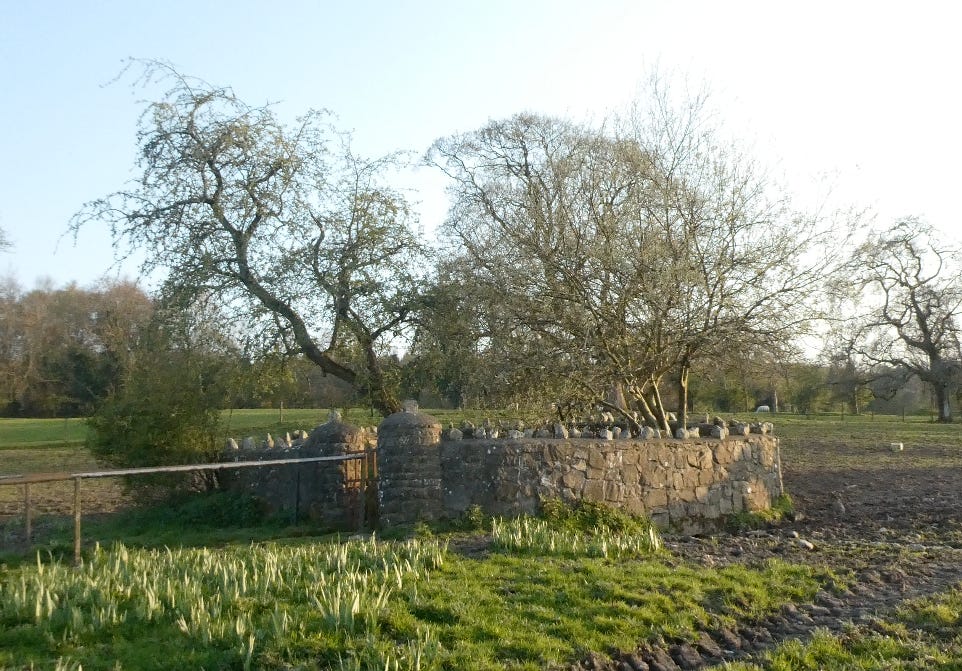
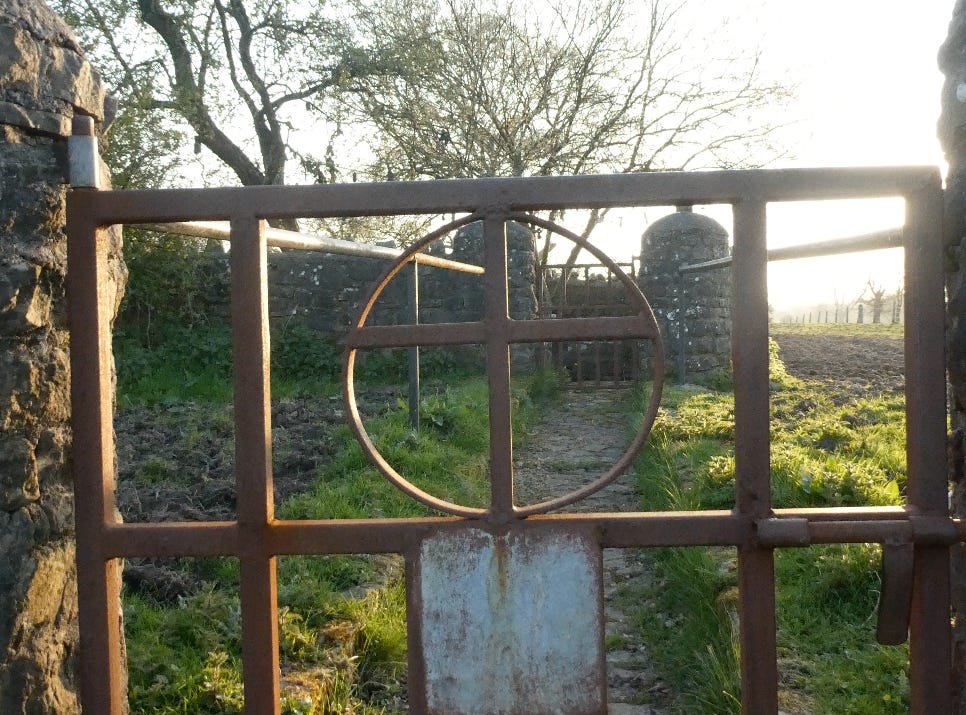
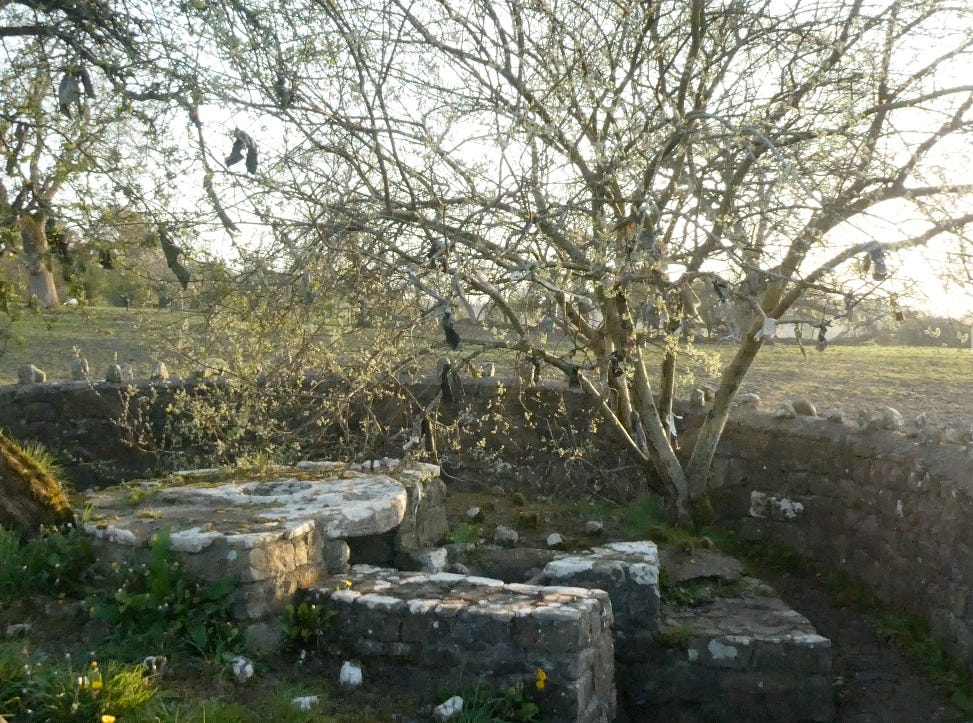
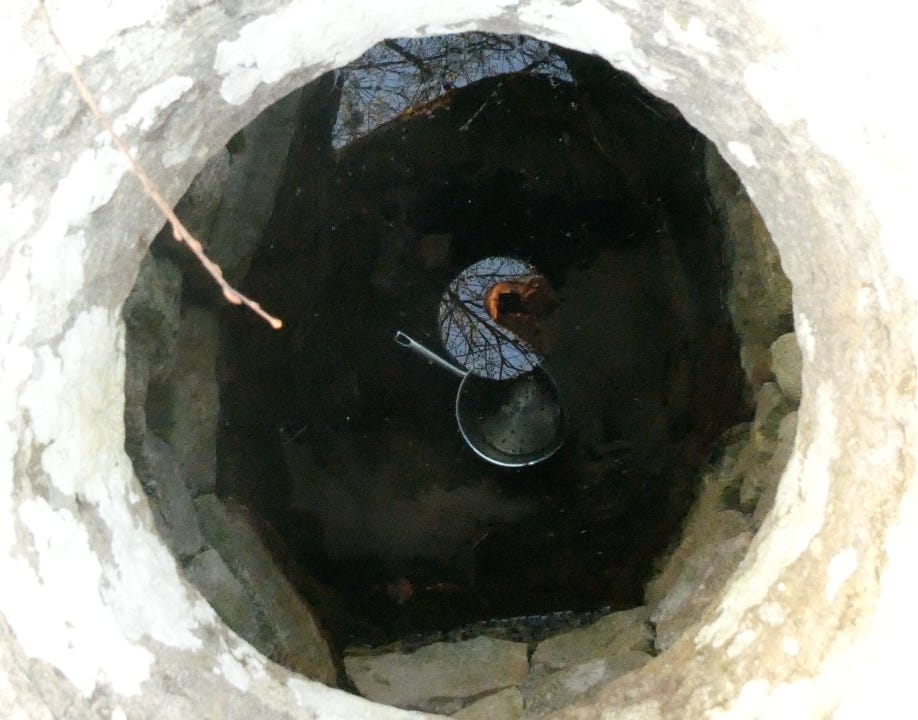
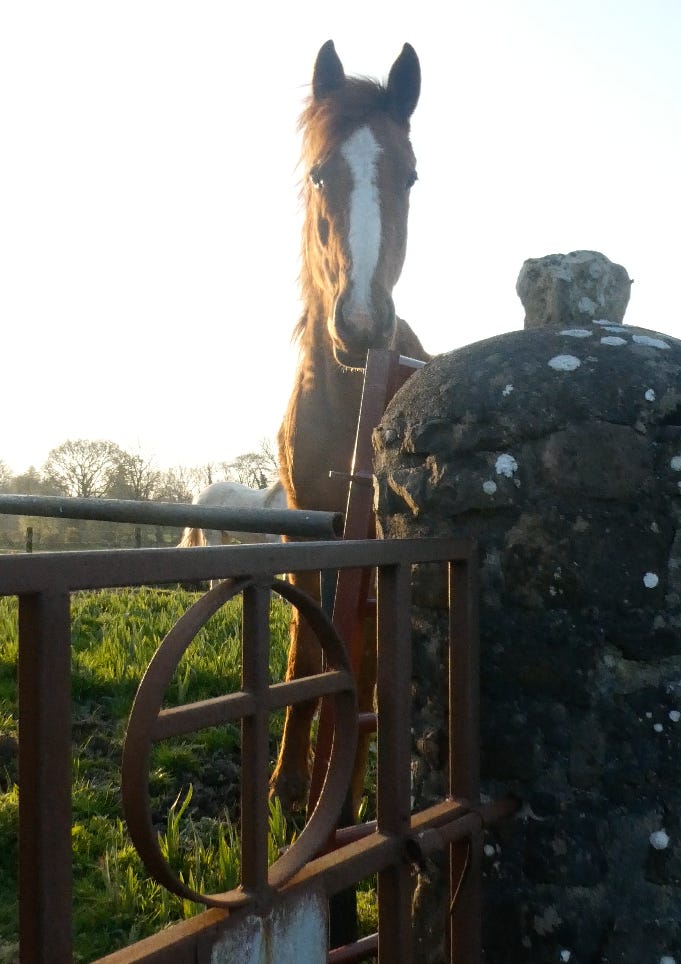
My favorite well so far (even if I could do without the Covid masks. Frankly, the religiosity of Covid masks despairs me, but I am not a Good Person.). The touch of mystery about it. It is comfortably between being abandoned (and desolate) and being heavily upkept.
As for making time for prayer at Christmas, probably as you get older, Paul, you will have more time for prayer at Christmas, who knows ? Savor what it means to be still in your prime, if I may be so bold. You are a busy man, with the obligations that come from busyness/business. Time enough ahead, perhaps, to no longer be a busy man.
There is a French expression that goes "on ne peut pas être au four et au moulin". You can't be at the stove and the mill (at the same time).
Ironically enough, I have met too many people who are dedicated to being at the stove and the mill at the same time. They are profoundly dissatisfied with their lot in life. Could this be... sin ?
There’s a horse that Knows Things, to be sure ...